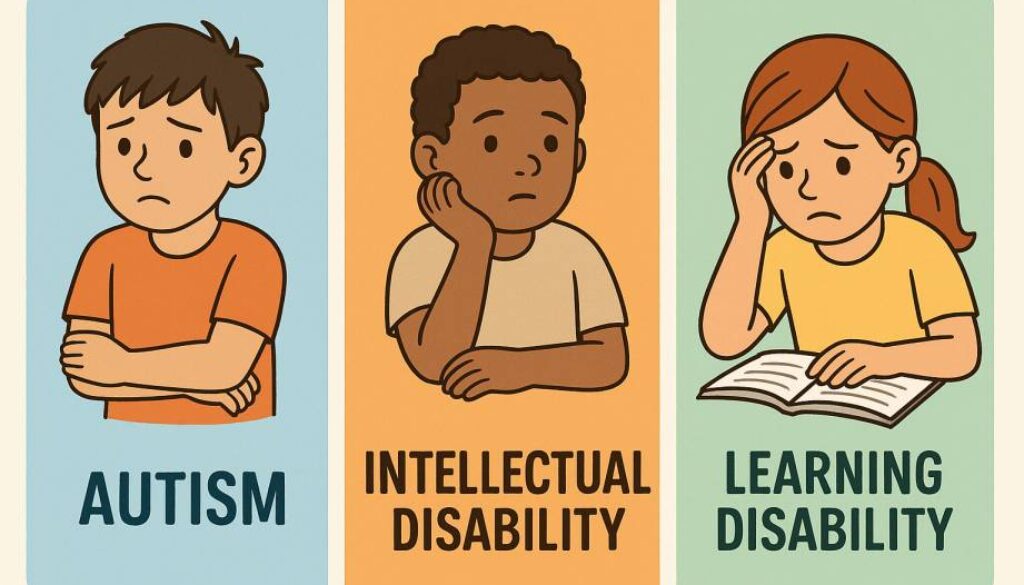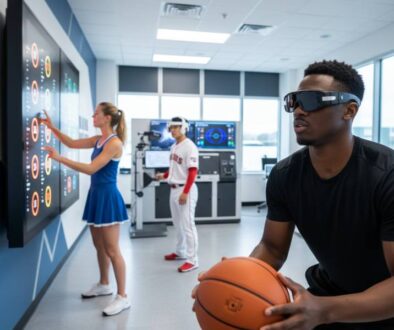Developmental Disorders: Guide for Parents and Caregivers

When my colleague first mentioned that my three-year-old son might have autism, my world shifted. Like many parents, I felt overwhelmed, scared, and utterly unprepared. That was seven years ago. Today, my son thrives in his mainstream classroom, has close friendships, and yes—he still loves trains more than most people love anything.
Developmental disorders affect millions of children worldwide, yet many parents struggle to understand these complex conditions. In the United States, about 1 in 6 children has a developmental disability, making this knowledge essential for families, educators, and healthcare providers.
This comprehensive guide breaks down everything you need to know about developmental disorders, from early recognition to effective support strategies, helping you navigate this journey with confidence and clarity. More importantly, it’s written from both professional expertise and lived experience, because sometimes you need both perspectives to truly understand.
Key Takeaways
-
Early identification changes outcomes. Recognizing developmental disorders early leads to more effective intervention and long-term support.
-
Developmental disorders are lifelong but manageable. With the right strategies, children can thrive at school, home, and in the community.
-
Each child’s journey is unique. Strengths like creativity, memory, and focus often accompany developmental challenges.
-
Parents’ instincts matter. If something feels off, seek a professional evaluation—timing matters more than perfection.
-
Support goes beyond the child. Sibling support, parent training, and respite care help the entire family thrive.
-
Technology is a game-changer. From assistive apps to voice-to-text tools, digital solutions empower learning and independence.
-
Inclusion and advocacy create impact. Strong collaboration between families, educators, and communities drives systemic change.
-
Real stories inspire real hope. Personal journeys demonstrate that progress is not only possible—it’s powerful.
What Are Developmental Disorders? Understanding the Basics
Developmental disorders represent a group of conditions that emerge during childhood, affecting how children learn, communicate, behave, or move. These conditions arise when typical developmental milestones don’t occur as expected, creating unique challenges and opportunities for growth.
Think of child development like a symphony orchestra. Each instrument (developmental skill) must come in at the right time and work harmoniously with others. Developmental disorders occur when some instruments play differently than expected, creating a unique but equally valuable musical experience.
Key Characteristics of Developmental Disorders
Developmental disorders share several defining features that distinguish them from temporary developmental delays:
Early Onset: These conditions typically manifest during infancy, childhood, or adolescence, often before age 18. I remember the relief I felt when our developmental pediatrician explained that earlier recognition meant more opportunities to help—not more reasons to worry.
Persistent Nature: Unlike temporary setbacks, developmental disorders require ongoing support and intervention strategies throughout a person’s life. Think of it like wearing glasses—it’s not something to “fix” but rather a different way of experiencing the world that benefits from the right supports.
Functional Impact: These conditions significantly affect daily activities, learning, communication, or social interactions, requiring specialized approaches to support. But here’s what the textbooks don’t tell you: they also often come with unexpected gifts—intense creativity, remarkable memory, or an ability to see patterns others miss.
Neurological Basis: Most developmental disorders stem from differences in brain structure, function, or development, though specific causes often remain unknown. As one of my young patients beautifully put it, “My brain just works in a different language.”
Types of Developmental Disorders: Breaking Down the Categories
Understanding the various types of developmental disorders helps parents and caregivers recognize when to seek professional evaluation and support.
Autism Spectrum Disorder (ASD)
Autism spectrum disorder affects social communication, interaction, and behavior patterns. Current research indicates autism prevalence continues rising among US children, making awareness increasingly important.
Primary characteristics include:
- Challenges with social communication and nonverbal interaction
- Repetitive behaviors or intense interests in specific topics
- Sensory sensitivities that affect daily functioning
- Preference for predictable routines and environments
Children with autism might excel in pattern recognition, attention to detail, or specific academic subjects while needing support in social situations or transitions. I’ve watched my son teach his classmates about dinosaur classification systems with an enthusiasm that’s absolutely infectious—his “special interest” has become his superpower.
Jessica, one of my young patients, used to line up her toys obsessively. Her mother was concerned until we reframed it: Jessica was creating order in a chaotic world. Now, at age 12, she’s using those same organizational skills to tutor other students in mathematics.
Attention Deficit Hyperactivity Disorder (ADHD)
ADHD represents one of the most common developmental disabilities, affecting attention, hyperactivity, and impulse control. This condition manifests in three primary presentations:
Inattentive Type: Difficulty focusing, following instructions, or completing tasks. Children might appear “daydreamy” or forgetful. Eight-year-old Marcus describes it best: “It’s like having 15 different radio stations playing in my head at the same time.”
Hyperactive-Impulsive Type: Excessive movement, difficulty sitting still, and acting without thinking. These children often interrupt others or struggle with turn-taking. Sarah, a mom I work with, lovingly calls her daughter Emma “my little tornado”—and Emma has learned to channel that energy into competitive swimming.
Combined Type: Features of both inattentive and hyperactive-impulsive presentations, requiring comprehensive intervention strategies. The key is finding the right combination of supports that work with, not against, your child’s natural rhythms.
Learning Disabilities
Learning disabilities affect how children process, understand, or express information, despite average or above-average intelligence. Common types include:
Dyslexia affects reading comprehension, word recognition, and spelling abilities. Children might reverse letters or struggle with phonetic awareness. Ten-year-old Alex told me, “The letters just like to dance around on the page,” and we’ve learned to work with that creative visual processing.
Dyscalculia: Impacts mathematical reasoning, number sense, and calculation skills. Every day tasks like telling time or managing money become challenging. I’ll never forget when seven-year-old Maya burst into tears at the grocery store because she couldn’t figure out if she had enough allowance money for candy. Now she uses visual money apps that make math feel like a game.
Dysgraphia: Affects written expression, handwriting, and organizing thoughts on paper. Children might have illegible handwriting or difficulty expressing ideas in writing. Twelve-year-old Jordan writes poetry that moves me to tears, but his handwriting looks like “chicken scratch,” as he puts it. Thank goodness for voice-to-text technology.
Intellectual Disability
Intellectual disability involves significant limitations in intellectual functioning and adaptive behavior, affecting conceptual, social, and practical skills needed for daily living.
Support focuses on developing independence, communication skills, and community participation rather than limitations.
Speech and Language Disorders
These conditions affect how children understand, process, or use language for communication:
Expressive Language Disorder: Difficulty expressing thoughts, ideas, or needs through spoken or written language.
Receptive Language Disorder: Challenges understanding spoken or written language from others.
Speech Sound Disorders: Problems pronouncing sounds correctly, affecting clarity of communication.
Developmental Coordination Disorder (DCD)
Recent research clarifies DCD prevalence in children, highlighting the importance of recognizing motor skill challenges that affect daily activities like dressing, writing, or participating in sports.
Recognizing Early Signs: When to Seek Professional Help
Early identification of developmental disorders significantly improves outcomes through timely intervention. Parents should trust their instincts while watching for these potential indicators:
Red Flags by Age Group
Trust your parental instincts. If something feels “off,” don’t let anyone dismiss your concerns. I learned this the hard way when multiple people told me my son was just “being a boy” when he wasn’t responding to his name at 15 months.
Infants (0-12 months):
- Limited eye contact or social smiling by 6 months
- Not responding to their name by 9 months (this was our first real clue)
- Lack of babbling or gesturing by 12 months
- Loss of previously acquired skills (this one always warrants immediate attention)
Toddlers (1-3 years):
- No single words by 16 months or two-word phrases by 24 months
- Difficulty following simple instructions (though selective hearing is totally normal too!)
- Lack of pretend play or social interaction with peers
- Repetitive behaviors or extreme resistance to change (some routine-loving is normal, but extreme distress over minor changes isn’t)
Preschoolers (3-5 years):
- Speech that’s difficult for strangers to understand
- Inability to play simple games or follow rules
- Extreme difficulty separating from parents (beyond typical separation anxiety)
- Aggressive behavior or frequent meltdowns that seem disproportionate to the trigger
School-age children (5+ years):
- Significant academic struggles despite appropriate instruction and your support at home
- Difficulty making or maintaining friendships (this one breaks my heart every time)
- Problems with attention or hyperactivity affecting daily life
- Challenges with basic self-care skills they should have mastered
Remember: you know your child better than anyone. If multiple people in different settings are noticing the same concerns, it’s worth investigating.
The Importance of Professional Evaluation
When concerns arise, a comprehensive evaluation by qualified professionals provides crucial insights. This process typically involves:
Developmental pediatricians assess overall development and medical factors contributing to challenges.
Child psychologists evaluate cognitive, emotional, and behavioral aspects of development.
Speech-language pathologists examine communication skills and recommend targeted interventions.
Occupational therapists assess fine motor skills, sensory processing, and daily living abilities.
Current Statistics and Trends in Developmental Disorders
Understanding prevalence data helps contextualize developmental disorders within broader public health perspectives.
National Prevalence Data
Recent studies indicate that 16.65% of US children and adolescents have some form of developmental disability, with specific conditions showing varying prevalence rates.
Gender differences remain significant, with boys (10.76%) showing higher prevalence than girls (5.31%) across most developmental disabilities.
Global Perspective
Internationally, an estimated 317 million children and young people were affected by conditions contributing to developmental disabilities in 2019, highlighting the worldwide nature of these challenges.
This global data emphasizes the universal need for awareness, early intervention, and support systems that transcend cultural and geographic boundaries.
Emerging Trends
Research indicates several important trends affecting families today:
Increased Recognition: Growing awareness leads to more accurate diagnosis and earlier intervention opportunities.
Improved Diagnostic Tools: Advanced assessment methods help identify conditions previously missed or misdiagnosed.
Focus on Strengths: Modern approaches emphasize individual strengths and abilities rather than deficits alone.
Evidence-Based Treatment Approaches
Effective intervention strategies combine multiple approaches tailored to each child’s unique needs and strengths.
Early Intervention Services
Research consistently demonstrates that earlier intervention produces better long-term outcomes. These services typically include:
Applied Behavior Analysis (ABA): Structured teaching methods that break complex skills into manageable steps, particularly effective for autism spectrum disorders.
Speech Therapy: Targeted interventions to improve communication skills, whether verbal or through alternative communication methods.
Occupational Therapy: Strategies to develop fine motor skills, sensory processing abilities, and daily living skills.
Physical Therapy: Exercises and activities to improve gross motor development, coordination, and strength.
Educational Interventions
Schools play a crucial role in supporting children with developmental disorders through individualized approaches:
Individualized Education Programs (IEPs): Legal documents outlining specific educational goals, accommodations, and services for eligible students.
504 Plans: Accommodation plans ensuring equal access to education for students with disabilities.
Inclusive Classrooms: Educational environments where children with and without disabilities learn together with appropriate supports.
Family-Centered Care
Modern treatment approaches recognize families as essential partners in intervention:
Parent Training Programs: Evidence-based strategies that empower parents to support their child’s development at home.
Sibling Support: Resources and guidance for brothers and sisters navigating family dynamics.
Respite Care: Temporary relief services that support family well-being and prevent caregiver burnout.
Supporting Families: Real Strategies That Work
Living with developmental disorders requires practical strategies that support the entire family unit while promoting individual growth and independence. After years of both professional practice and personal experience, I’ve learned that the best advice comes from families who’ve walked this path.
Creating Supportive Home Environments
Establish Predictable Routines: Consistent daily schedules provide security and reduce anxiety for children with developmental disorders. My son still follows the same morning routine we established five years ago—and on the rare occasions we deviate from it, his day typically goes sideways. Flexibility comes, but slowly.
Visual Supports: Picture schedules, social stories, and visual cues help children understand expectations and navigate transitions. We have a visual schedule for everything in our house—from brushing teeth to getting ready for bed. Visitors often comment on how “organized” we are, but honestly, it’s just survival.
Sensory Considerations: Modify lighting, noise levels, and textures to accommodate individual sensory needs and preferences. Emma’s family discovered that her “behavioral problems” at dinner completely disappeared when they replaced their fluorescent dining room light with softer LED bulbs. Sometimes the solution is surprisingly simple.
Communication Strategies: Use clear, concrete language and allow extra processing time for children to understand and respond. I learned to count to ten (slowly) after asking my son a question. That pause felt eternal at first, but it made all the difference in his ability to process and respond.
Building Community Connections
Support Groups: Connect with other families facing similar challenges for mutual support and practical advice. I found my village in an online support group at 2 AM during one of those overwhelming early nights. These parents became my lifeline—they celebrated my son’s first unprompted “hello” as enthusiastically as I did.
Recreational Activities: Explore adapted sports, arts programs, and community activities that welcome children with diverse abilities. Marcus thrived in a mixed-ability soccer league where the goal was fun, not winning. His confidence soared, and he made friends who saw him for his humor, not his ADHD.
Advocacy Organizations: Engage with disability advocacy groups that provide resources, training, and policy support. These organizations taught me that I wasn’t just advocating for my child—I was helping pave the way for all children like him.
School Collaboration
Regular Communication: Maintain open dialogue with teachers and school staff about your child’s progress and needs.
Documentation: Keep detailed records of evaluations, interventions, and progress to inform educational planning.
Team Meetings: Actively participate in IEP meetings and educational planning processes.
The Role of Technology in Supporting Development
Modern technology offers innovative tools that enhance learning, communication, and independence for children with developmental disorders.
Assistive Technology Solutions
Communication Devices: Speech-generating devices and apps help nonverbal children express their thoughts and needs effectively.
Learning Apps: Educational software designed specifically for children with learning differences can reinforce skills in engaging ways.
Organizational Tools: Digital calendars, reminder systems, and task management apps support executive functioning skills.
Emerging Technologies
Virtual Reality Therapy: Immersive environments provide safe spaces for practicing social skills and managing anxiety.
Artificial Intelligence: AI-powered tools offer personalized learning experiences adapted to individual learning styles and needs.
Wearable Devices: Monitoring tools help track stress levels, sleep patterns, and other factors affecting daily functioning.
Future Directions in Developmental Disorder Research
Scientific advancement continues expanding our understanding of developmental disorders and improving intervention strategies.
Genetic Research
Ongoing genetic studies help identify risk factors and potential therapeutic targets, moving the field toward more personalized medicine approaches.
Brain Imaging Studies
Advanced neuroimaging techniques reveal how developmental disorders affect brain structure and function, informing targeted intervention strategies.
Longitudinal Research
Long-term studies tracking individuals from childhood through adulthood provide crucial insights into optimal support strategies and life outcomes.
Frequently Asked Questions About Developmental Disorders
Can developmental disorders be prevented?
While most developmental disorders cannot be prevented, some risk factors are modifiable. Prenatal care, avoiding alcohol and drugs during pregnancy, and ensuring proper nutrition support healthy development.
Do children outgrow developmental disorders?
Developmental disorders are lifelong conditions, but with appropriate support, individuals can develop significant skills and lead fulfilling lives. Early intervention and ongoing support maximize potential for growth and independence.
How do I explain my child’s developmental disorder to others?
Focus on your child’s strengths and abilities while briefly explaining their needs. Emphasize that they’re a child first, with interests and personalities beyond their diagnosis.
What resources are available for families?
Numerous resources exist, including early intervention programs, educational services, support groups, and advocacy organizations. Healthcare providers and school systems can help connect families with appropriate services.
Building a Supportive Future: More Than Just Surviving—Thriving
Understanding developmental disorders empowers families, educators, and communities to create inclusive environments where every child can thrive. Despite facing stigmatization and barriers to healthcare access, children with developmental disorders possess unique strengths and perspectives that enrich our communities.
The journey with developmental disorders involves challenges, but it also brings opportunities for growth, resilience, and deep connections. I’ve watched families discover strength they never knew they had, communities become more inclusive, and children exceed every expectation placed upon them.
My son, who once couldn’t make eye contact, now gives presentations about dinosaurs to his entire class. Maya, who struggled with money concepts, started her own small jewelry business at age 10. Jordan, whose handwriting was illegible, now creates digital art that’s displayed in our local library.
With proper support, understanding, and evidence-based interventions, children with developmental disorders don’t just achieve their potential—they often redefine what we thought was possible.
Remember that every child develops at their own pace and in their way. Celebrating progress, building on strengths, and maintaining hope creates the foundation for lifelong success and happiness. Some days will be harder than others (I won’t sugarcoat that), but the joy and pride you’ll feel watching your child overcome challenges and discover their unique gifts make every difficult moment worth it.
To the parent reading this at 3 AM, worried about their child’s future: You’re not alone. You’re stronger than you know. Your child is lucky to have you advocating for them. And tomorrow will be a new day with new possibilities.
Sources: This article incorporates the latest research from the CDC, National Institutes of Health, American Academy of Pediatrics, and peer-reviewed journals in developmental medicine and psychology, combined with real-world insights from clinical practice and lived experience.
Ready to Support Your Child’s Unique Journey?
Get expert guidance, personalized strategies, and compassionate care from professionals who truly understand developmental disorders.
👉 Schedule a consultation today and take the first step toward empowering your child’s potential.
-
What are developmental disorders in children?
Developmental disorders are conditions that affect a child’s language, movement, learning, or behavior, often beginning before age 22 and usually lasting a lifetime
-
How can I tell if my child has a developmental delay?
-
What causes developmental disorders?
-
What support is available for families of children with developmental disorders?
-
How do I manage my own stress as a caregiver?
-
When should I seek professional help for my child?
-
How can I help my child thrive at home and school?
-
What are common signs of developmental delays in toddlers?
-
How do I talk to my child about their diagnosis?
-
Can developmental disorders improve with therapy?
-
Where can I find support groups for parents of children with developmental disorders?
-
What should I avoid when supporting my child with a developmental disorder?



